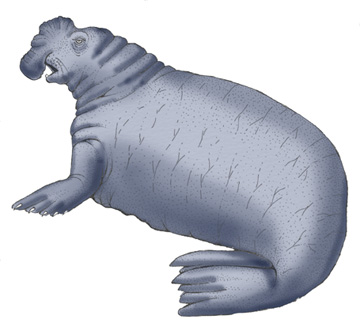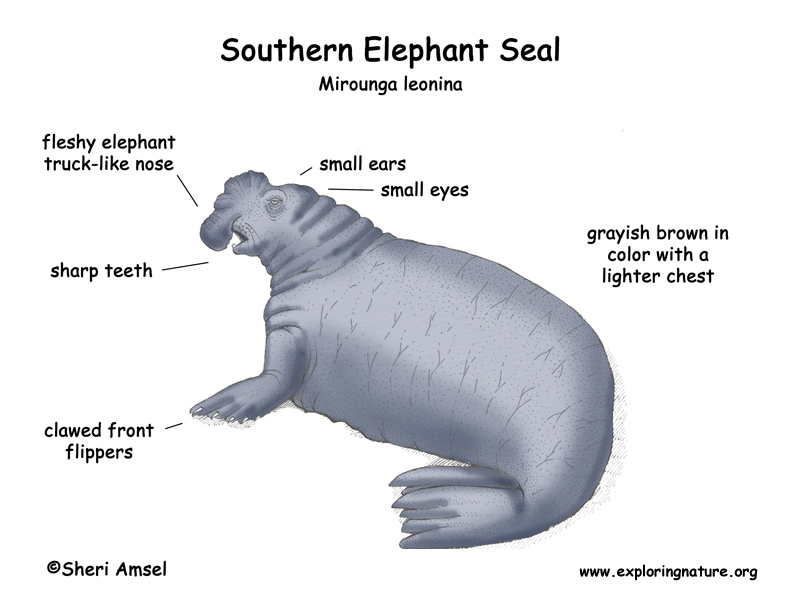

They are found throughout the oceans around the Antarctic. In breeding season, there are 3 different groups of them on islands north of the Antarctic pack ice. Most are found on the island of South Georgia.
They live on the open ocean when not on the rocky beaches of their breeding islands.
They are the largest of any seal or sea lion. The male is much bigger, weighing more than 4 tons (8,800 pounds) and reaching 14 – 20 feet long. They have a fleshy, elephant trunk-like nose. They are grayish brown in color with a lighter chest. Their fat keeps them warm and helps them survive the 3 month mating seasons when they don’t eat and can lose up to 1,500 pounds.
They can dive to almost 2,000 feet right to the ocean floor while hunting. They travel between seasons (migrate).
They eat eels, manta rays, squid, octopi, crabs, fish and small sharks. They don’t chew their prey but swallow it in large chunks.
Their young are hunted by killer whales and leopard seals. Adults are so thick with fat that only killer whales and sharks can hunt them with any success.
Males come to the breeding ground a month before the females to fight over who will get to breed with the females. Only 1 in 50 males will get to breed with the females. Each male may breed 100 females. Females have 1 baby (pup) every year. They are actually only pregnant for 9 months (gestation), as the fertile egg waits 3 months before it starts growing. This is called delayed implantation and allows the females to have their baby on the same week every year.
They can live up to 25 years. They are listed as Lower Risk - least concern.
Kingdom: Animalia
Phylum: Chordata
Subphylum: Vertebrata
Class: Mammalia
Order: Carnivora
Suborder: Caniformia
Family: Phocidae
Genus: Mirounga
Species: Mirounga leonina
When you research information you must cite the reference. Citing for websites is different from citing from books, magazines and periodicals. The style of citing shown here is from the MLA Style Citations (Modern Language Association).
When citing a WEBSITE the general format is as follows.
Author Last Name, First Name(s). "Title: Subtitle of Part of Web Page, if appropriate." Title: Subtitle: Section of Page if appropriate. Sponsoring/Publishing Agency, If Given. Additional significant descriptive information. Date of Electronic Publication or other Date, such as Last Updated. Day Month Year of access < URL >.
Amsel, Sheri. "Seal (Southern Elephant)" Exploring Nature Educational Resource ©2005-2024. December 13, 2024
< http://www.exploringnature.org/db/view/Seal-Southern-Elephant >

